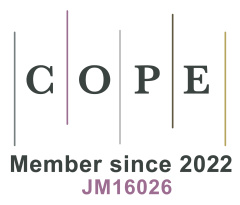Synergizing music therapy and biomechanics: Unveiling novel modulation mechanisms for chronic pain management
Abstract
This study aimed to evaluate the combined effects of music therapy and biomechanical interventions on chronic pain management, focusing on pain intensity, functional impairment, and quality of life. A mixed-methods approach was employed, integrating quantitative measures (pain intensity, functional impairment, and quality of life) with qualitative interviews to capture participants’ experiences. The study involved 120 participants with chronic pain conditions, including fibromyalgia, arthritis, and neuropathic pain. Moreover, participants were selected through purposive sampling. Descriptive and inferential statistics revealed significant improvements in pain intensity visual analogue scale (VAS: 7.8 to 4.6, p < 0.001), functional impairment pain disability index (PDI: 45.6 to 32.3, p < 0.001), and quality of life (SF)-36: 62.4 to 78.2, p < 0.001). Qualitative findings highlighted emotional and cognitive benefits from music therapy and physical improvements from biomechanical interventions, particularly enhanced mobility and reduced pain. The integration of both therapies demonstrated a synergistic effect, significantly improving overall pain management (β = −0.5, p < 0.001). The study concludes that a combined approach offers a comprehensive, effective treatment for chronic pain. Clinical implications include incorporating multimodal interventions into rehabilitation programs with a personalized approach based on pain type and severity. Future research should explore long-term effects and further refine individualized treatment strategies. In contrast, the limitation of this study is the relatively small and homogeneous sample, which may limit generalizability to broader chronic pain populations. Additionally, the short intervention period does not allow for assessing long-term effects.
References
1. Apkarian AV, Baliki MN, Geha PY. Towards a theory of chronic pain. Progress in Neurobiology. 2009; 87(2): 81-97. doi: 10.1016/j.pneurobio.2008.09.018
2. Bukowska AA, Krężałek P, Mirek E, et al. Neurologic Music Therapy Training for Mobility and Stability Rehabilitation with Parkinson’s Disease—A Pilot Study. Frontiers in Human Neuroscience. 2016; 9. doi: 10.3389/fnhum.2015.00710
3. Caylor J, Reddy R, Yin S, et al. Spinal cord stimulation in chronic pain: evidence and theory for mechanisms of action. Bioelectronic Medicine. 2019; 5(1). doi: 10.1186/s42234-019-0023-1
4. Chan C, Ackermann B. Evidence-informed physical therapy management of performance-related musculoskeletal disorders in musicians. Frontiers in Psychology. 2014; 5. doi: 10.3389/fpsyg.2014.00706
5. D’Souza R, Her Y, Hussain N, et al. Evidence-Based Clinical Practice Guidelines on Regenerative Medicine Treatment for Chronic Pain: A Consensus Report from a Multispecialty Working Group. Journal of Pain Research. 2024; 17: 2951-3001. doi: 10.2147/jpg. s480559
6. de l’Etoile SK, LaGasse AB. Music Therapy and Neuroscience from Parallel Histories to Converging Pathways. Music Therapy Perspectives. 2013; 31(1): 6-14. doi: 10.1093/mtp/31.1.6
7. DeLauder RM. Movement Through the Storm: Integrating Dance and Biomechanical Principles in Dance/Movement Therapy Services for People with Multiple Sclerosis [PhD thesis]. Drexel University; 2021.
8. Descalzi G, Ikegami D, Ushijima T, et al. Erratum: Epigenetic mechanisms of chronic pain. Trends in Neurosciences. 2015; 38(9): 579. doi: 10.1016/j.tins.2015.07.002
9. Fryer G. Integrating osteopathic approaches based on biopsychosocial therapeutic mechanisms. Part 2: Clinical approach. International Journal of Osteopathic Medicine. 2017; 26: 36-43. doi: 10.1016/j.ijosm.2017.05.001
10. Fusar-Poli L, Bieleninik Ł, Brondino N, et al. The effect of music therapy on cognitive functions in patients with dementia: a systematic review and meta-analysis. Aging & Mental Health. 2017; 22(9): 1103-1112. doi: 10.1080/13607863.2017.1348474
11. Gebhardt S, Dammann I, Loescher K, et al. The effects of music therapy on the interaction of the self and emotions—An interim analysis. Complementary Therapies in Medicine. 2018; 41: 61-66. doi: 10.1016/j.ctim.2018.08.014
12. Giaretta S, Magni A, Migliore A, et al. A Review of Current Approaches to Pain Management in Knee Osteoarthritis with a Focus on Italian Clinical Landscape. Journal of Clinical Medicine. 2024; 13(17): 5176. doi: 10.3390/jcm13175176
13. Grässel S, Zaucke F, Madry H. Osteoarthritis: Novel Molecular Mechanisms Increase Our Understanding of the Disease Pathology. Journal of Clinical Medicine. 2021; 10(9): 1938. doi: 10.3390/jcm10091938
14. Guo H, Que M, Shen J, et al. Effect of Music Therapy Combined with Free Position Delivery on Labor Pain and Birth Outcomes. Applied Bionics and Biomechanics. 2022; 2022: 1-6. doi: 10.1155/2022/8963656
15. Dayyana S, Suryono S, Widyawati MN, et al. Effectiveness of Music Therapy on Anxiety And B-Endorphin Levels in Primigravida During the Third Stage of Pregnancy. Belitung Nursing Journal. 2017; 3(6): 735-742. doi: 10.33546/bnj.298
16. Hazrati E, Eftekhar SP, Mosaed R, et al. Understanding the kynurenine pathway: A narrative review on its impact across chronic pain conditions. Molecular Pain. 2024; 20. doi: 10.1177/17448069241275097
17. Jiang F, Zhao H, Zhang P, et al. Challenges in tendon-bone healing: emphasizing inflammatory modulation mechanisms and treatment. Frontiers in Endocrinology. 2024; 15. doi: 10.3389/fendo.2024.1485876
18. Krock E, Rosenzweig D, Haglund L. The Inflammatory Milieu of the Degenerate Disc: Is Mesenchymal Stem Cell-based Therapy for Intervertebral Disc Repair a Feasible Approach? Current Stem Cell Research & Therapy. 2015; 10(4): 317-328. doi: 10.2174/1574888x10666150211161956
19. Kuchera ML. Applying osteopathic principles to formulate treatment for patients with chronic pain. Journal of Osteopathic Medicine. 2007.
20. Kwan KYC, Ng KWK, Rao Y, et al. Effect of Aging on Tendon Biology, Biomechanics and Implications for Treatment Approaches. International Journal of Molecular Sciences. 2023; 24(20): 15183. doi: 10.3390/ijms242015183
21. Leonard H. Live Music Therapy During Rehabilitation After Total Knee Arthroplasty: A Randomized Controlled Trial. Journal of Music Therapy. 2019; 56(1): 61-89. doi: 10.1093/jmt/thy022
22. Marriott KA, Birmingham TB. Fundamentals of osteoarthritis. Rehabilitation: Exercise, diet, biomechanics, and physical therapist-delivered interventions. Osteoarthritis and Cartilage. 2023; 31(10): 1312-1326. doi: 10.1016/j.joca.2023.06.011
23. Meinerz C, Fritz J, Cross JA, et al. Running to the beat: Does listening to music affect running cadence and lower extremity biomechanics? Gait & Posture. 2023; 103: 62-66. doi: 10.1016/j.gaitpost.2023.04.010
24. Mitchell AZ, Rhodes LM. Integrating Real-Time Biomechanical Feedback with Cognitive-Behavioral Interventions to Enhance the Efficacy of Strength Training. Studies in Sports Science and Physical Education. 2024; 2(2): 1-9. doi: 10.56397/ssspe.2024.06.01
25. Moseley GL. A pain neuromatrix approach to patients with chronic pain. Manual therapy. 2003; 8(3): 130-40. doi: 10.1016/S1356-689X(03)00051-1
26. Mušinská J, Židík I, Živčák J. The biomechanical movements for people with disabilities are based on art therapy. Lékař a technika-Clinician and Technology; 2014.
27. Nguyen TM, Ngoc DTM, Choi JH, et al. Unveiling the Neural Environment in Cancer: Exploring the Role of Neural Circuit Players and Potential Therapeutic Strategies. Cells. 2023; 12(15): 1996. doi: 10.3390/cells12151996
28. Nijs J, Tumkaya Yilmaz S, Elma Ö, et al. Nutritional intervention in chronic pain: an innovative way of targeting central nervous system sensitization? Expert Opinion on Therapeutic Targets. 2020; 24(8): 793-803. doi: 10.1080/14728222.2020.1784142
29. Ossipov MH, Dussor GO, Porreca F. Central modulation of pain. Journal of Clinical Investigation. 2010; 120(11): 3779-3787. doi: 10.1172/jci43766
30. Ossipov MH, Morimura K, Porreca F. Descending pain modulation and chronification of pain. Current Opinion in Supportive & Palliative Care. 2014; 8(2): 143-151. doi: 10.1097/spc.0000000000000055
31. Pereira AFM, Cavalcante JS, Angstmam DG, et al. Unveiling the Pain Relief Potential: Harnessing Analgesic Peptides from Animal Venoms. Pharmaceutics. 2023; 15(12): 2766. doi: 10.3390/pharmaceutics15122766
32. Petroianu GA, Aloum L, Adem A. Neuropathic pain: Mechanisms and therapeutic strategies. Frontiers in Cell and Developmental Biology. 2023; 11. doi: 10.3389/fcell.2023.1072629
33. Pluess M, Belsky J. Vantage sensitivity: Individual differences in response to positive experiences. Psychological Bulletin. 2013; 139(4): 901-916. doi: 10.1037/a0030196
34. Raglio A. Effects of music and music therapy on mood in neurological patients. World Journal of Psychiatry. 2015; 5(1): 68. doi: 10.5498/jp. v5.i1.68
35. Rouault M, McWilliams A, Allen MG, et al. Human Metacognition Across Domains: Insights from Individual Differences and Neuroimaging. Personality Neuroscience. 2018; 1. doi: 10.1017/pen.2018.16
36. Salonen BL. Tertiary music students’ experiences of an occupational health course incorporating the body mapping approach [PhD thesis]. University of the Free State; 2018.
37. Siegmund LA, Barkley JE, Knapp D, et al. Acute Effects of Local Vibration with Biomechanical Muscle Stimulation on Low-Back Flexibility and Perceived Stiffness. Athletic Training & Sports Health Care. 2014; 6(1): 37-45. doi:10.3928/19425864-20140115-01
38. Suzuki Y, DeKeyser R. The Interface of Explicit and Implicit Knowledge in a Second Language: Insights from Individual Differences in Cognitive Aptitudes. Language Learning. 2017; 67(4): 747-790. doi: 10.1111/lang.12241
39. Silverman MJ. Music Therapy and Therapeutic Alliance in Adult Mental Health: A Qualitative Investigation. Journal of Music Therapy. 2018; 56(1): 90-116. doi: 10.1093/jmt/thy019
40. McCraty R, Barrios-Choplin B, Atkinson M, et al. The effects of different types of music on mood, tension, and mental clarity. Alternative therapies in health and medicine; 1998.
Copyright (c) 2025 Author(s)

This work is licensed under a Creative Commons Attribution 4.0 International License.
Copyright on all articles published in this journal is retained by the author(s), while the author(s) grant the publisher as the original publisher to publish the article.
Articles published in this journal are licensed under a Creative Commons Attribution 4.0 International, which means they can be shared, adapted and distributed provided that the original published version is cited.



 Submit a Paper
Submit a Paper
